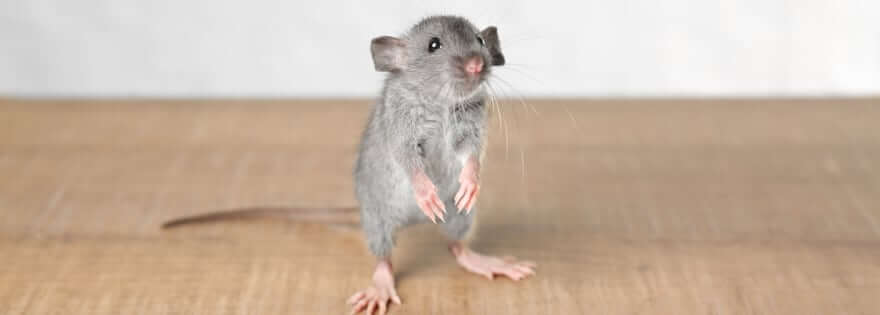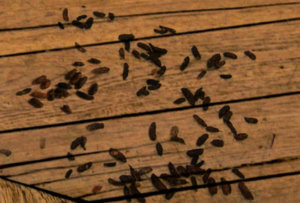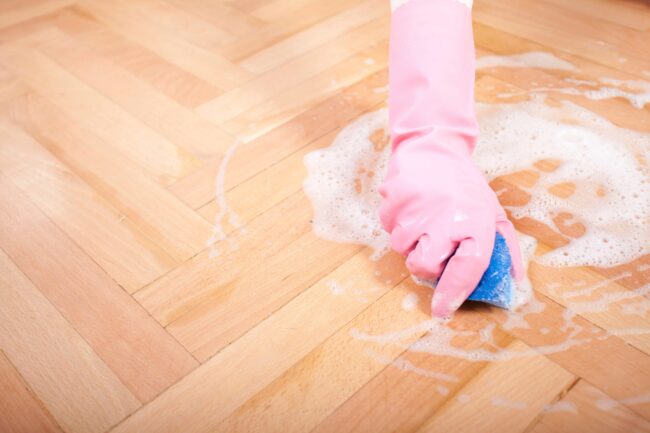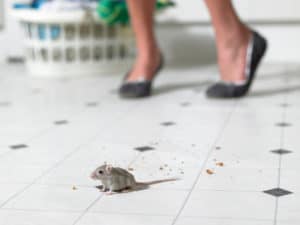How to Identify Mouse Droppings
By: EarthKind
Seeing a mouse in the house is upsetting, but finding out that a rodent infestation has been lurking in your home for a long time is even worse. Knowing how to identify the signs of a pest problem will help you prevent infestations and keep your home pest-free.
Finding mouse droppings or “mice rice” is one of the most obvious signs that you have a rodent problem in your home. Being able to identify whether droppings are from a rodent or a different type of pest will help in creating a plan to clean up the droppings and get rid of the pests.
Mice can be dangerous. Whether you have a small problem or a full blown mouse infestation, it’s important to act fast. There are many diseases that can be spread through mouse feces — from salmonella to Hantavirus — so cleaning affected areas is especially important. They can also trigger allergies, which can lead to sneezing, coughing, and more. We discuss what mouse poop looks like, the dangers of having droppings in your home, and what to do once you discover the issue.
What Does Mouse Poop Look Like?
Mouse droppings look similar to dark grains of rice, ranging in size from 3/16 of an inch to ¼ inch long. The pieces typically have pointed ends and vary from blackish brown to gray in color, depending on how long the droppings have been laying there and the diet of the mouse.
Fresh droppings are black. They turn brown over the next week and change to gray over time. If a rodent has consumed pesticide from a bait station, the droppings may be the same color as the bait. Older droppings will crumble upon contact, while fresh ones will be soft and malleable (never touch any of them with your bare hands).
Mice can leave behind 50-75 pellets per day. The number and size of droppings you see can help you determine the severity and type of pest problem you are facing. These critters will poop while they are moving, so droppings will be seen along the paths they travel and in the places where they are finding food. They may poop near their nest, but they will not go to the bathroom in their actual nest — believe it or not, they like to keep their homes clean!
Does it Smell?
While rodent droppings may not have any noticeable smell, mouse urine has a distinct ammonia smell. These pests have very poor eyesight but a highly developed sense of smell. They can gather information about an area from the scents left behind from other rodents’ waste, such as where to find food and what areas to avoid.
While you may not be able to find their droppings by smell, you may notice an ammonia smell from the urine they leave behind. If you can clearly detect this scent, it’s likely that there isn’t just a single mouse but many within the home.
Keep your home pest free with simple, effective solutions. Subscribe and save!
What Does Rat Poop Look Like?
Rat poop is generally the same shape as mouse poop with pointed, tapered ends and a similar black/dark brown color, but they are larger. They are usually about a ½ inch in size, so that’s the best way to differentiate which type of rodent may be in your home.
House mice, deer mice, roof rats, and Norway rats are typically to blame for rodent infestations in a home.
Other pest droppings, like cockroach or termite droppings, are sometimes mistaken for rodent droppings because of their small size and dark color. Squirrel droppings are similar in shape to that of a rodent, though a little larger and thicker. Raccoon poop is more similar in appearance to a small dog’s poop.
If you think you may have a problem with a different type of pest, take a look at our pest dropping identification chart.
How to Clean Up Droppings
After you’ve identified rodent droppings, you need to get rid of them immediately due to potential health risks. They are not just unsightly but can also spread disease. You must follow safety precautions when cleaning up mouse droppings. Take this advice from the CDC:
- Air out the space for 30 minutes before cleaning, if possible.
- Wear rubber, latex, or vinyl gloves and a mask or respirator.
- Use a disinfectant spray (DIY by mixing 1 part bleach to 10 parts water) and soak the area for 5 minutes.
- Clean the area with disposable rags or paper towels.
- Put waste in a sealed plastic bag in a covered trash can.
It is especially important to avoid sweeping or vacuuming areas where mice have been until after these steps have been completed. Sweeping or vacuuming can cause germs to circulate in the air; if you inhale any pathogens from rodents, you could become seriously ill.
Common Places You May Find Rodent Droppings
Rodents are always seeking shelter, food, and warmth, so mouse and rat feces are typically found in areas where these pests frequent. Kitchens, cabinets, pantries, closet spaces, attics, basements, garages, and food storage areas are common areas where droppings may be found.
Additionally, check behind appliances, around water heaters, in wall voids, and along baseboards, as mice tend to navigate along these paths. Secluded areas and spaces full of potential nesting materials such as insulation or cardboard boxes are also places to look. Observing and cleaning these areas regularly can help identify and address potential infestations promptly.
Preventive Measures
Cleaning up after these pests is not an activity you want to repeat, so take your time to inspect the areas you found droppings for potential entry points they may use to come inside. They can enter through an opening smaller than a dime and easily chew through foam insulation, wood, and plastic. If you notice any cracks around doors, kitchen cabinets, window frames, or open spaces where pipes, cables, and utility lines pass through the wall, block the openings with steel wool. Use silicone caulk to fill in cracks and gaps.
Make the area less attractive to household pests by cleaning up any available food sources, such as dirty dishes, uncovered trash cans, or unattended pet food. Clear clutter so mice have fewer places to hide, and consider using a rodent repellent to prevent this from happening again.
Stay Away Rodent is a botanical rodent repellent that works to get rid of mice and prevent them from coming back in the future. Shop Stay Away Rodent online or in a store near you.












 day
day